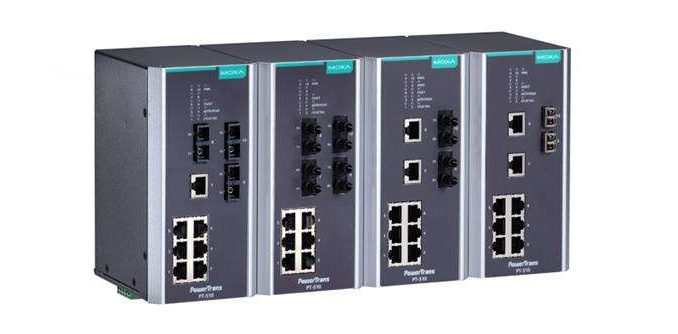
Industrial switches, also known as industrial Ethernet switches, are Ethernet switch devices used in industrial control. Due to the adopted network standards, they are open, widely used, and inexpensive, using transparent and unified TCP/IP. Protocol, Ethernet has become the main communication standard in the field of industrial control.
Industrial switches feature carrier-grade performance to withstand harsh environments. With a wide range of products and flexible port configurations, it can meet the needs of various industrial fields. The product features a wide temperature design with a protection rating of no less than IP30 and supports standard and proprietary ring redundancy protocols.
What are the functions of industrial switches? Industrial Ethernet switches are primarily used for real-time Ethernet data transmission in complex industrial environments. When Ethernet is designed, it uses carrier sense multiplexed collision detection (CSMA/CD mechanism), and its reliability is greatly reduced in complex industrial environments, which makes Ethernet unusable. Industrial Ethernet switches use storage switching to improve Ethernet communication speed, and built-in intelligent alarm design monitors network operation, ensuring a reliable and stable operation of Ethernet in harsh industrial environments.
What is the difference between industrial switches and commercial switches?
The difference between an industrial Ethernet switch and a commercial switch is mainly reflected in the function and performance. The difference in function mainly refers to the fact that industrial Ethernet switches are functionally closer to industrial network communication, such as interconnection with various field buses, redundancy of devices, and real-time of devices;
- The difference in performance is mainly in the adaptation to the external environmental parameters. In addition to many harsh environments such as coal mines and ships, the industrial environment also has special requirements for EMI (electromagnetic compatibility), temperature, humidity, and dust. Among them, the influence of temperature on industrial network equipment is the most extensive.
- Components: Industrial Ethernet switch components have higher requirements for selection, and should be better adapted to the needs of industrial production sites.
- Mechanical environment: Industrial Ethernet switches can better adapt to harsh mechanical environments, including vibration, shock, corrosion, dust, and water.
- Climate: Industrial Ethernet switches are better suited to poorer climates, including temperature and humidity.
- Electromagnetic environment: Industrial Ethernet switches have strong anti-electromagnetic interference capabilities.
- Operating voltage: Industrial Ethernet switches have a wide operating voltage range, while ordinary switches require higher voltages.
- Power supply design: ordinary switches are basically single power supply, while industrial switch power supplies are generally dual power supply back up.
- Installation method: Industrial Ethernet switches can be installed in DIN rails and racks. Common switches are usually rack and desktop.
- Cooling method: Industrial Ethernet switches generally use a fanless case for heat dissipation, while ordinary switches are fan-distributed.
The above is the whole content of the industrial switch and the difference between the industrial switch and the commercial switch. I believe everyone has a basic understanding of the role of industrial switches after reading this article.